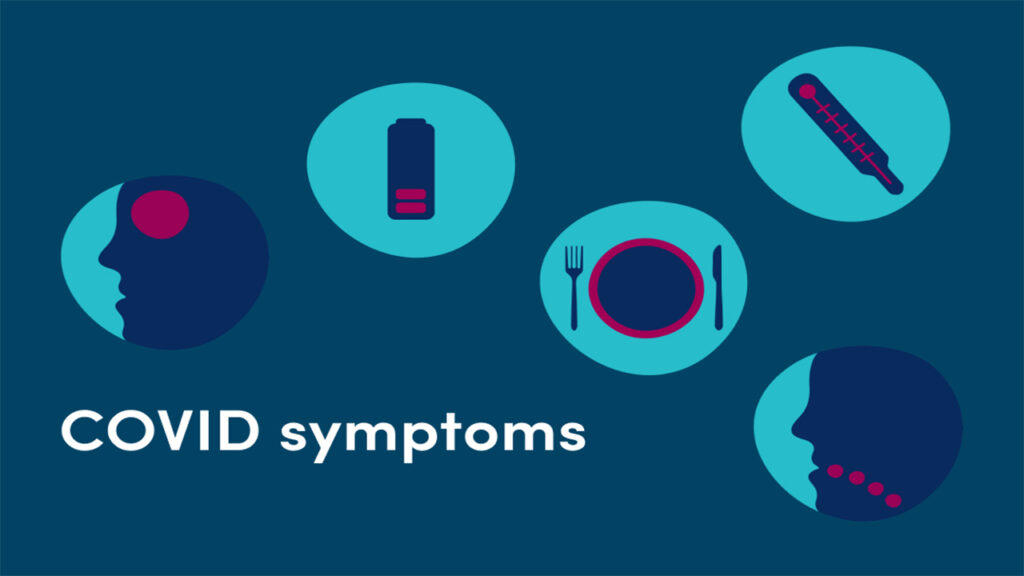Coronavirus (COVID-19): Despite vaccination, people have contracted the COVID infection though it didn’t get severe in most of them which reveal that vaccinated individuals are susceptible to viral attack as well. This sends out a big message: it’s still too early to let guards down.
Coronavirus is going to live with us at least for some time now. So, no matter how often we are vaccinated we always have to keep ourselves protected against the virus.
The third wave of COVID which had peaked in November-January this year has already started ebbing. But with 5 variants of concern being detected within a span of 2 years which have wreaked havoc on mankind, the emergence of another strong variant cannot be ruled out.
Apart from precautionary measures, having a clear knowledge about the common symptoms is vital. Since the majority of the population all across the globe has been inoculated against viral infection, it is more important to know what the common symptoms of COVID infection are that one gets even after vaccination.
Read more: Top 10 Foods that make Arthritis worse | Top 10 health benefits of yoga in daily life
Symptoms of COVID-19 (Coronavirus)
Runny nose
This is a very common symptom seen in both vaccinated and unvaccinated individuals. Though the runny nose is a symptom of a number of health issues, its prevalence during COVID infection has been more noticeable. “Our data shows that when rates of COVID-19 are high, the chances that a runny nose is due to coronavirus infection is high. But when rates of COVID-19 are low, it’s less likely to be a symptom and more likely to be due to another cause such as a cold or allergy,” says a 2021 report by the ZOE COVID Study.
The occurrence of a runny nose is particularly seen during the COVID infection caused by a variant of concern.
So even if you are vaccinated it is likely you will get a runny nose if you are exposed to COVID, therefore it is advisable to go for a COVID test.
Sore throat
This was the principal symptom of coronavirus attack seen during the third wave of COVID for which Omicron was responsible. In the Omicron induced COVID infection many people, vaccinated and unvaccinated, complained of scratchy throat. This was not seen during the earlier waves of COVID. Experts have flagged it as a key warning sign of Omicron led COVID infection.
Continuous sneezing
Uncontrollable or continuous sneezing may be an acute sign of allergy or common cold, but its connection with COVID infection was far more visible during the Omicron wave than it was in the earlier waves of COVID. A report by ZOE COVID study says that vaccinated people showed this symptom more than those who are unjabbed.
New cough
Just like nausea and headache, cough is one of the persistent symptoms of COVID which has been seen in all the three waves. Dry and persistent coughs occurring more times within an hour or in more episodes within 24 hours were seen during the third wave of the COVID as well when most of the people were already vaccinated.
Headache
Another key sign of Omicron infection is headache. Stabbing pains or pulsing was seen to be a common occurrence during the Omicron wave. People have experienced severe to very severe headaches during Omicron infection. “Headache is a frequent symptom of COVID-19. It may be the presenting symptom and typically develops early in the course of the disease. Most patients describe a bilateral headache with frontal predominance, an oppressive quality, and severe intensity,” says a July 2021 study based on 2914 patients.
Muscle pain
Body aches and muscle pains were reported in the majority of COVID cases during the third wave. Body pain associated with severe pain in the lower part of the body was seen in patients irrespective of their vaccination status. “One out of three people who are ill with COVID-19 will have unusual muscle pains. It’s more common in adults aged 16-65 (41%) than children (15%) or those over the age of 65 (36%). Only 2% of people who were ill with COVID-19 reported muscle pains as their only symptom,” reveals ZOE COVID study.
Nasal congestion or nausea
Said to be the most common symptom during the early stage of infection, nausea was seen in vaccinated people too. People who were reinfected with COVID after being infected in the earlier waves felt nauseated. Nausea was a common occurrence in the first and second wave of COVID as well.
COVID precautions
Due to the prevalence of COVID among individuals, it is vital to follow COVID precautions. Even when the number of COVID cases are less, one should not drop the guards. Wearing masks in crowded places and keeping hands cleans are the most effective ways to keep the virus from spreading along with vaccination and booster shots.

